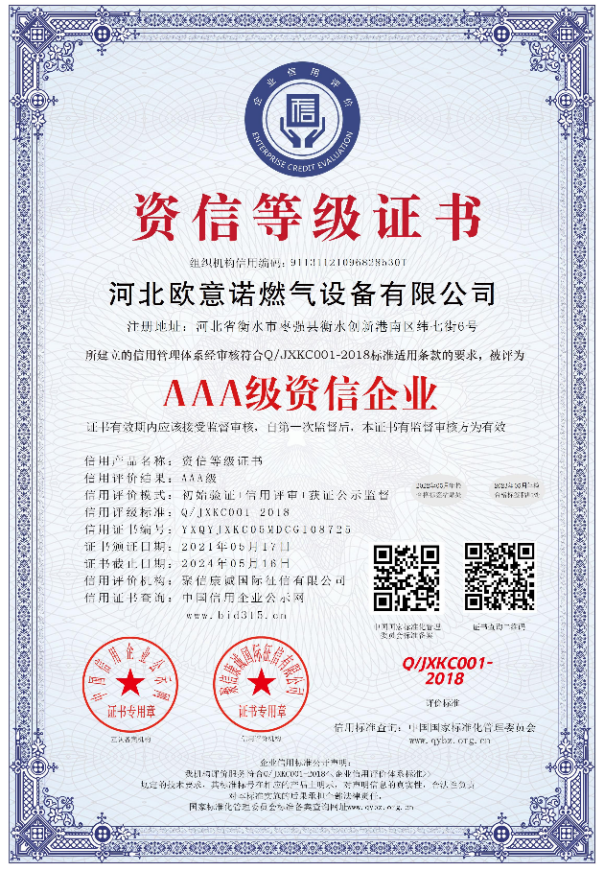
Aug . 09, 2024 07:50
Back to list
Understanding Pressure Reduction Stations and Their Role in Natural Gas Distribution Systems
Understanding Pressure Reducing Stations An Overview
A pressure reducing station (PRS) is an essential component in the management of gas and liquid distribution systems. It serves a vital function in controlling and lowering the pressure of natural gas or other fluids from a high-pressure source to a specified lower pressure, making it safe and suitable for use in various applications. This article delves into the significance, components, operation, and benefits of pressure reducing stations.
Significance of Pressure Reducing Stations
Pressure reducing stations are critical in ensuring that the pressure of gas or liquid remains within a safe range as it enters residential, commercial, and industrial systems. High-pressure fluids can pose serious risks, including pipeline bursts, equipment damage, and potential hazards to lives and property. By controlling the pressure, PRSs enhance safety, reliability, and efficiency in fluid delivery systems.
Key Components of a Pressure Reducing Station
A typical pressure reducing station comprises several key components
1. Inlet and Outlet Valves These allow for the control of fluid flow in and out of the station. The inlet valve regulates the flow from the high-pressure source, while the outlet valve enables smooth delivery to the downstream system.
2. Pressure Regulators The heart of a PRS, pressure regulators automatically adjust the resistance to flow based on the pressure downstream. They ensure that the output pressure remains stable even with fluctuations in the inlet pressure.
3. Pressure Gauges Installed at various points within the station, pressure gauges provide real-time monitoring of inlet and outlet pressures, allowing operators to detect any irregularities immediately.
.
5. Filtration Units To protect equipment downstream, filtration units may be included to remove impurities from the fluid.
محطة تخفيض الضغط

How Pressure Reducing Stations Operate
The operation of a pressure reducing station is relatively straightforward. High-pressure fluid enters the station through the inlet valve. The pressure regulator takes over, automatically adjusting to maintain a consistent output pressure. If the incoming pressure exceeds the regulator's set point, the regulator reduces it by diverting excess flow through the relief valve.
The process is continuous, meaning the PRS adapts to varying demands and inlet pressures in real-time, ensuring a stable supply of fluid for industrial processes, heating systems, or cooking appliances.
Benefits of Pressure Reducing Stations
1. Enhanced Safety By regulating and reducing pressure, PRSs mitigate risks associated with high-pressure systems, safeguarding lives and property.
2. Operational Efficiency Consistent outlet pressures contribute to improved efficiency in equipment operation, enhancing longevity and reducing maintenance costs.
3. Adaptability Pressure reducing stations can be configured to meet specific pressure requirements for different applications, making them versatile across various industries.
4. Cost Savings Over time, PRSs can contribute to significant cost savings by reducing energy consumption and minimizing the wear and tear on downstream equipment.
Conclusion
In conclusion, pressure reducing stations play an indispensable role in the safe and efficient distribution of gases and liquids in various sectors. By understanding their significance, components, operational mechanics, and benefits, industries can better appreciate the importance of these systems in maintaining operational integrity and safety. As technology advances, the design and functionality of pressure reducing stations will continue to evolve, further enhancing their effectiveness in industrial applications.
Latest news
-
Safety Valve Spring-Loaded Design Overpressure ProtectionNewsJul.25,2025
-
Precision Voltage Regulator AC5 Accuracy Grade PerformanceNewsJul.25,2025
-
Natural Gas Pressure Regulating Skid Industrial Pipeline ApplicationsNewsJul.25,2025
-
Natural Gas Filter Stainless Steel Mesh Element DesignNewsJul.25,2025
-
Gas Pressure Regulator Valve Direct-Acting Spring-Loaded DesignNewsJul.25,2025
-
Decompression Equipment Multi-Stage Heat Exchange System DesignNewsJul.25,2025

